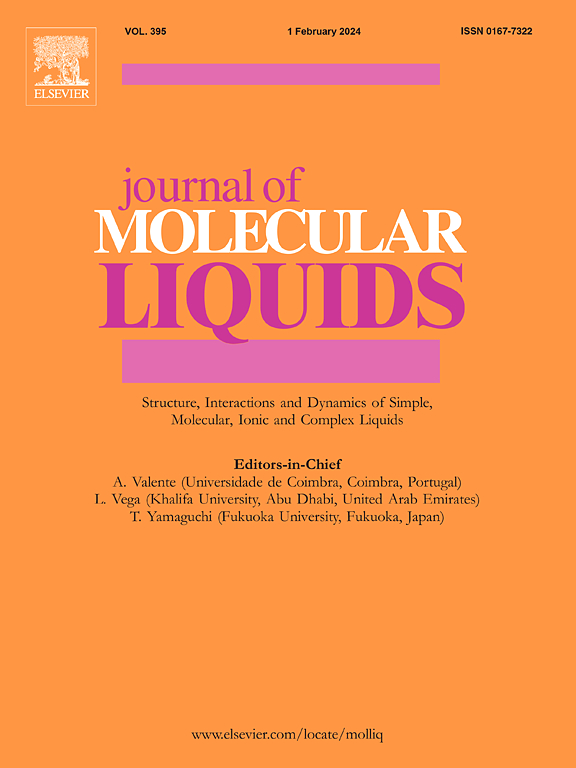Protic ionic liquids as thermodynamic methane hydrates inhibitors
IF 5.3
2区 化学
Q2 CHEMISTRY, PHYSICAL
引用次数: 0
Abstract
Hydrates are highly unwanted solids in the oil/gas industry. They can be formed by water and gas molecules present in oil/gas production when pressure and temperature conditions are favorable to their precipitation. This can lead to flow obstruction, which is why chemicals able to inhibit their formation are desirable. In the last 15 years there has been interest in finding Ionic Liquids (ILs) able to inhibit hydrate formation. However, Protic Ionic Liquids (PILs), an inexpensive class of ILs, have been neglected in the published literature on ILs as thermodynamic hydrates inhibitors (THIs). In this work four PILs were experimentally tested as THIs in a high-pressure cell using the isochoric method with stepwise temperature increase. The PILs 2-hydroxyethylammonium formate ([2-HEA][Of]), 2-hydroxyethylammonium acetate ([2-HEA][Ac]), bis(2-hydroxyethyl)ammonium formate ([BHEA][Of]), and bis(2-hydroxyethyl)ammonium acetate ([BHEA][Ac]) were tested at 10 wt% and 20 wt% in water within a pressure range of 5.06 MPa–11.70 MPa. The possibility of synergy with ethylene glycol (MEG) was also considered by testing solutions of [2-HEA][Of] + MEG and [2-HEA][Ac] + MEG at 10 wt% total THI content in water. From the thermodynamically consistent data obtained, it was possible to verify that these PILs are powerful THIs, with suppression temperatures comparable to or higher than MEG at the same mass content. Therefore, progress in finding alternative chemical hydrates inhibitors has been made with this study. In particular, [2-HEA][Ac] at 20 wt% was capable of dislocating the hydrate equilibrium curve by 6.8 K. Additionally, it was possible to verify that the effect of adding PIL to MEG in an aqueous media is purely additive as THI.
求助全文
约1分钟内获得全文
求助全文
来源期刊

Journal of Molecular Liquids
化学-物理:原子、分子和化学物理
CiteScore
10.30
自引率
16.70%
发文量
2597
审稿时长
78 days
期刊介绍:
The journal includes papers in the following areas:
– Simple organic liquids and mixtures
– Ionic liquids
– Surfactant solutions (including micelles and vesicles) and liquid interfaces
– Colloidal solutions and nanoparticles
– Thermotropic and lyotropic liquid crystals
– Ferrofluids
– Water, aqueous solutions and other hydrogen-bonded liquids
– Lubricants, polymer solutions and melts
– Molten metals and salts
– Phase transitions and critical phenomena in liquids and confined fluids
– Self assembly in complex liquids.– Biomolecules in solution
The emphasis is on the molecular (or microscopic) understanding of particular liquids or liquid systems, especially concerning structure, dynamics and intermolecular forces. The experimental techniques used may include:
– Conventional spectroscopy (mid-IR and far-IR, Raman, NMR, etc.)
– Non-linear optics and time resolved spectroscopy (psec, fsec, asec, ISRS, etc.)
– Light scattering (Rayleigh, Brillouin, PCS, etc.)
– Dielectric relaxation
– X-ray and neutron scattering and diffraction.
Experimental studies, computer simulations (MD or MC) and analytical theory will be considered for publication; papers just reporting experimental results that do not contribute to the understanding of the fundamentals of molecular and ionic liquids will not be accepted. Only papers of a non-routine nature and advancing the field will be considered for publication.
 求助内容:
求助内容: 应助结果提醒方式:
应助结果提醒方式:


